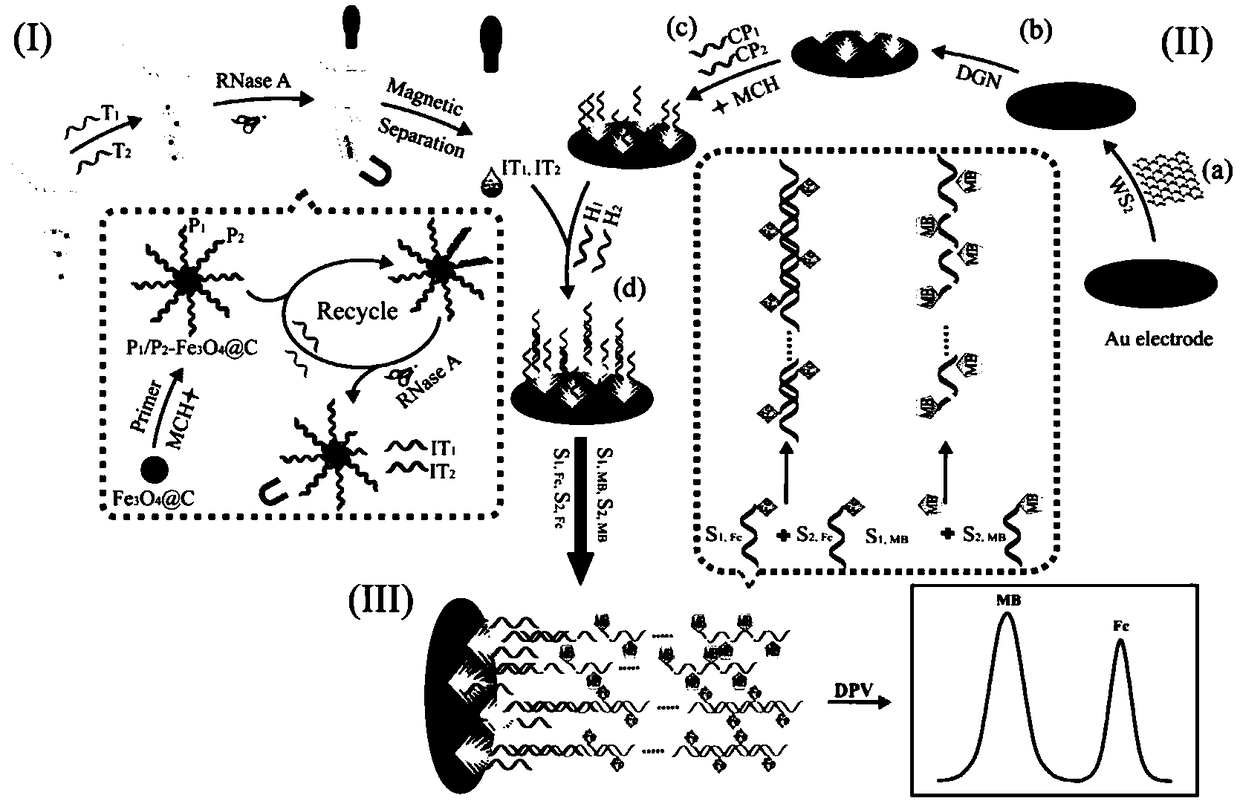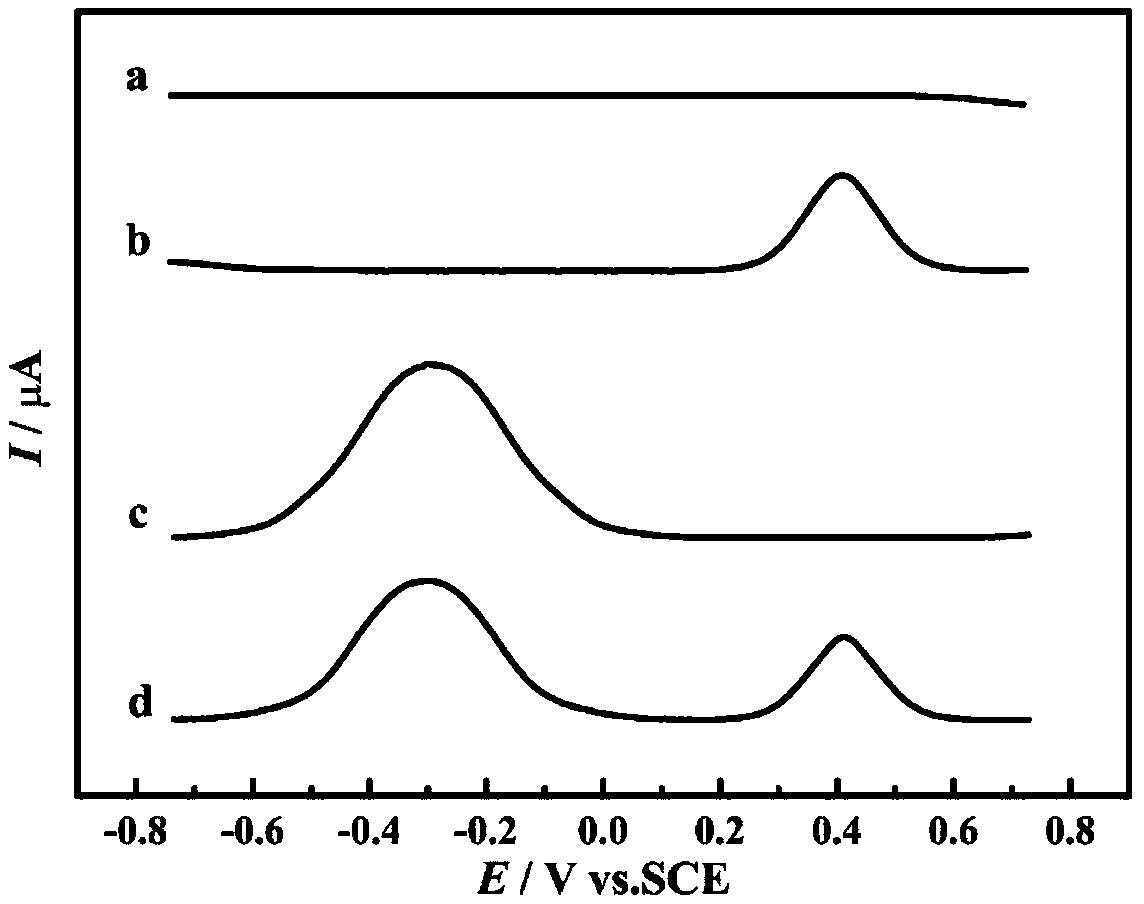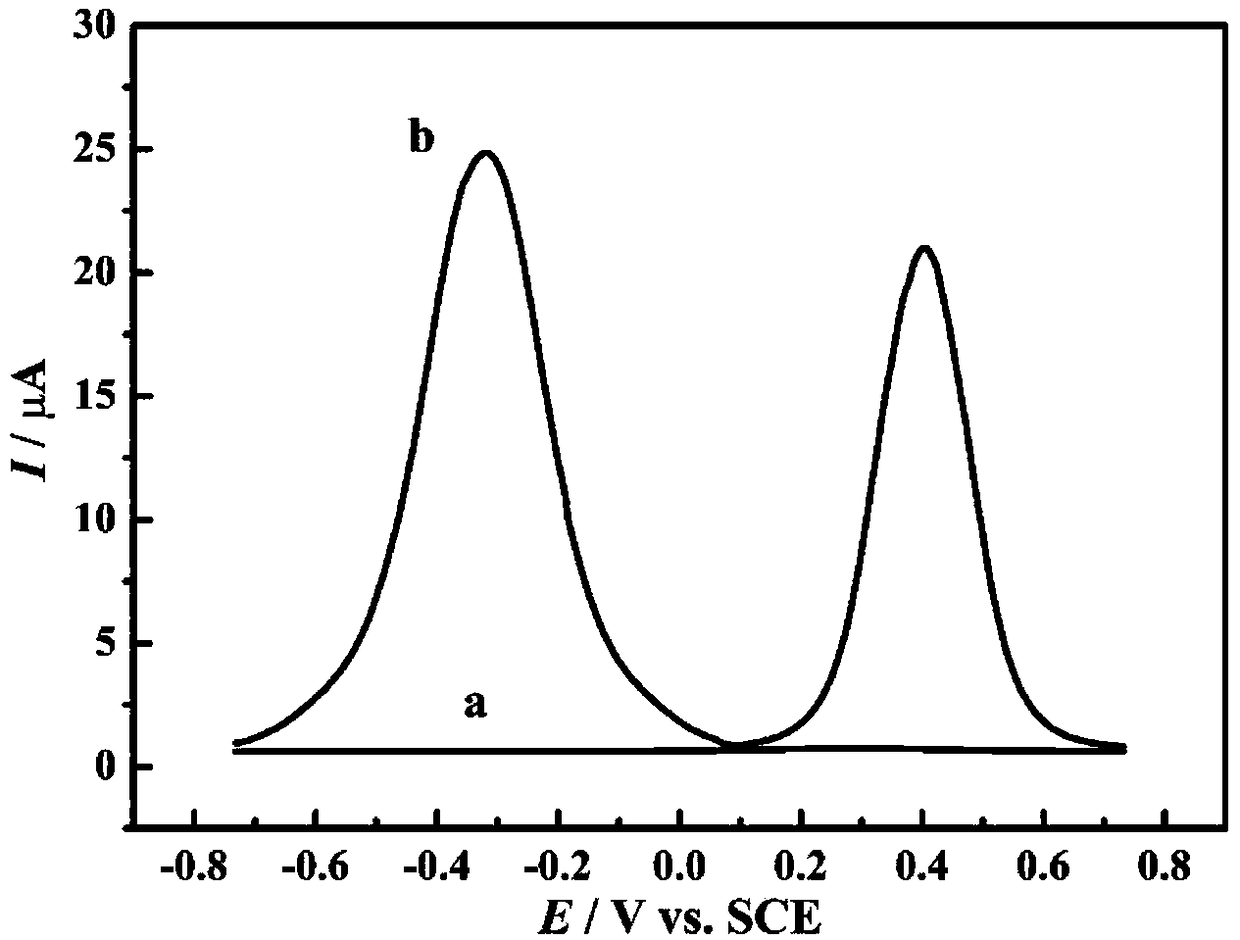lncRNA MEG3 dual detecting electrochemical gene sensor, preparation method and application thereof
A double detection and electrochemical technology, applied in the direction of biochemical equipment and methods, scientific instruments, instruments, etc., to achieve the effects of good selectivity, improved detection sensitivity, and accurate results
- Summary
- Abstract
- Description
- Claims
- Application Information
AI Technical Summary
Problems solved by technology
Method used
Image
Examples
Embodiment 1
[0029] This embodiment illustrates the preparation method of the gene sensor of the present invention, such as figure 1 shown, including the following steps:
[0030] (1) Preparation of tungsten disulfide / dendritic gold nanocomposite modified electrodes by electrochemical deposition;
[0031] The sensor is a sensor constructed with a three-electrode system, the gold electrode is the working electrode, the saturated calomel electrode is the reference electrode, and the platinum electrode is the counter electrode.
[0032] The gold electrode was used as the working electrode, and the gold electrode was ultrasonically cleaned in acetone, ethanol, and water in sequence, and then dried with nitrogen gas. Take 20 μL of 1mg / mL tungsten disulfide dispersion and drop it on the surface of the gold electrode that has been cleaned, and dry it in the air to obtain a tungsten disulfide-modified gold electrode. Then use the electrochemical deposition method, set the deposition voltage -0.1V...
Embodiment 2
[0057] In this example, the mechanism verification of the gene sensor in Example 1 is carried out.
[0058] Set up 4 experimental groups, respectively without test object and with single test object T 1 , adding a single detection object T 2 and join the double detection object (T 1 and T 2 ). Using DPV for electrochemical detection, the results are as follows figure 2 shown.
[0059] It can be seen that curve a has no electrochemical signal response when no detection object is added. When adding a single detection object T 1 , the curve b has a single detection object T 1 Corresponding electrochemical response of ferrocene. When adding a single detection object T 2 , the curve c has a single detection object T 2 The corresponding electrochemical response of methylene blue. At the same time, add the detection object T 1 and T 2 When , the electrochemical signal response of ferrocene and methylene blue appears simultaneously in curve d. This shows that the electr...
Embodiment 3
[0061] In this embodiment, the detection results of the sensor are compared when the dual signal amplification strategy is adopted and when no signal amplification is adopted.
[0062] The preparation method of the sensor is as described in Example 1, and the present invention uses RNaseA auxiliary signal amplification and IT 1 and IT 2 The resulting hybridization chain reaction performs double signal amplification.
[0063] From image 3 It can be seen that the gene sensor prepared without dual signal amplification strategy in curve a has no obvious electrochemical response, while the gene sensor prepared with dual signal amplification strategy in curve b shows excellent electrochemical response peaks of ferrocene and methylene blue at the same time. This shows that the gene sensor of the present invention can effectively enhance the electrochemical response and ultrasensitively detect ultra-trace biomolecules.
PUM
 Login to View More
Login to View More Abstract
Description
Claims
Application Information
 Login to View More
Login to View More - R&D
- Intellectual Property
- Life Sciences
- Materials
- Tech Scout
- Unparalleled Data Quality
- Higher Quality Content
- 60% Fewer Hallucinations
Browse by: Latest US Patents, China's latest patents, Technical Efficacy Thesaurus, Application Domain, Technology Topic, Popular Technical Reports.
© 2025 PatSnap. All rights reserved.Legal|Privacy policy|Modern Slavery Act Transparency Statement|Sitemap|About US| Contact US: help@patsnap.com



